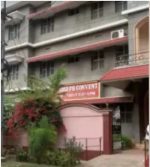Kabul: At least 80 people were killed and another 231 wounded in the Afghan capital on July 23, when a suicide bomber detonated his explosives-packed clothing, officials and witnesses said.
In a statement issued by news agency Aamaq, the Islamic State group claimed responsibility for the attack on a protest march by Afghanistan’s ethnic Hazaras. The marchers were demanding that a major regional electric power line be routed through their impoverished home province. Most Hazaras are Shia Muslims, while most Afghans are Sunni.
Waheed Majroeh, the head of international relations for the ministry of public health, confirmed the death toll and said it was likely to rise “as the condition of many of the injured is very serious.”
Footage on Afghan television and photographs posted on social media showed a scene of horror and carnage, with numerous bodies and body parts spread across the square, ndtv.com reported.
Other witnesses said that after the blast, security personnel shot their weapons in the air to disperse the crowd. Secondary attacks have been known to target people who come to the aid of those wounded in a first explosion.
Road blocks that had been set up overnight to prevent the marchers accessing the center of the city or the presidential palace hampered efforts to transfer some wounded to hospital, witnesses said. People took to social media to call for blood donations.
Angry demonstrations sealed some of the area around the square, and prevented police and other security forces from entering. Some threw stones at security forces.
The government had received intelligence that an attack on the march could take place, and had warned the organizers, a spokesman for Afghan President Ashraf Ghani told The Associated Press.
“We had intelligence over recent days and it was shared with the demonstration organizers, we shared our concerns because we knew that terrorists wanted to bring sectarianism to our community,” presidential spokesman Haroon Chakhansuri said.
Two suicide bombers had attempted to target the demonstrators, who were gathering in Demazang Square as their four-hour protest march wound down, Haroon Chakhansuri said. One of the suicide bombers was shot by the police. He said that three district police chiefs on duty at the square were injured and another three security personnel were killed.
Earlier, one of the march organizers, Laila Mohammadi, said she arrived at the scene soon after the blast and saw “many dead and wounded people.”
Ghani released a statement condemning the blast. “Peaceful demonstrations are the right of every citizen of Afghanistan and the government will do everything it can to provide them with security,” Ghani said, blaming the blasts on what he called “terrorists.”
The rights group Amnesty International said the “horrific attack … demonstrates the utter disregard that armed groups have for human life.”
“Such attacks are a reminder that the conflict in Afghanistan is not winding down, as some believe, but escalating, with consequences for the human rights situation in the country that should alarm us all,” it quoted Champa Patel, Amnesty’s South Asia director, as saying.
Violence had been widely feared at what was the second demonstration by Hazaras over the power line issue. The last one in May attracted tens of thousands of people, also shutting down the central business district.
The May march was attended by Hazara political leaders, who were notable by their absence on Saturday.
At the height of the march, demonstrators chanted slogans against the president and Chief Executive Abdullah Abdullah, shouting “death to discrimination” and “all Afghans are equal.”
The so-called TUTAP power line is backed by the Asian Development Bank with involvement of Turkmenistan, Uzbekistan, Tajikistan, Afghanistan and Pakistan. The original plan routed the line through Bamiyan province, in the central highlands, where most of the country’s Hazaras live.
That route was changed in 2013 by the previous Afghan government.
Leaders of the marches have said that the rerouting was evidence of bias against the Hazara community, which accounts for up to 15 percent of Afghanistan’s estimated 30 million-strong population. They are considered the poorest of the country’s ethnic groups, and often complain of discrimination. Bamiyan province, where most Hazara people live in the central highlands, is poverty stricken, though it is largely peaceful and has potential as a tourist destination.









